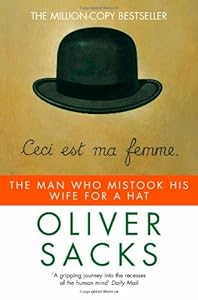In the title-story of the book, The Man Who Mistook His Wife for a Hat, neurologist Oliver Sachs describes Dr. P – a man who suffered from a degenerative problem in the right hemisphere of his brain.
Dr. P. was a talented musician and teacher and in many ways appeared not only normal, but, in fact, quite accomplished and capable. He himself didn’t believe there was anything the matter with him, sadly, however, this was not the case.
As a result of his neurological deterioration, Dr. P. sometimes failed to be able to tell the difference between people and other objects such as hat-stands or fire-hydrants – famously mistaking his wife’s head for his hat. However, even more catastrophic for Dr. P., was that he also lost his capacity to make ordinary judgements and this was the part of his condition that most severely impacted on everyday life. As Oliver Sacks puts it,
He could not make a cognitive judgement, though he was prolific in the production of cognitive hypotheses. A judgement is intuitive, personal, comprehensive and concrete – we ‘see’ how things stand in relation to one another and oneself…our mental processes, which constitute our being and life, are not just abstract and mechanical, but personal as well – and, as such, involve not just classifying and categorizing but continued judging and feeling also… (1)
Making judgements is not the same as being judgmental. Should I put mango in the curry? Does this dress make me look fat? Is it safe to cross the road? Will I marry Tom? We all make small, medium and large judgements all the time and so, if we want to live mindfully and not just ricochet around reacting to thing outside ourselves, we need to look at how we make these judgements.
Tomorrow – Thinking About Thinking
1) The Man Who Mistook His Wife for a Hat, Oliver Sachs, Picador, 1986, pp20-2
Related articles
- Intellectual Crush Friday #6 (natureplusnurture.wordpress.com)
